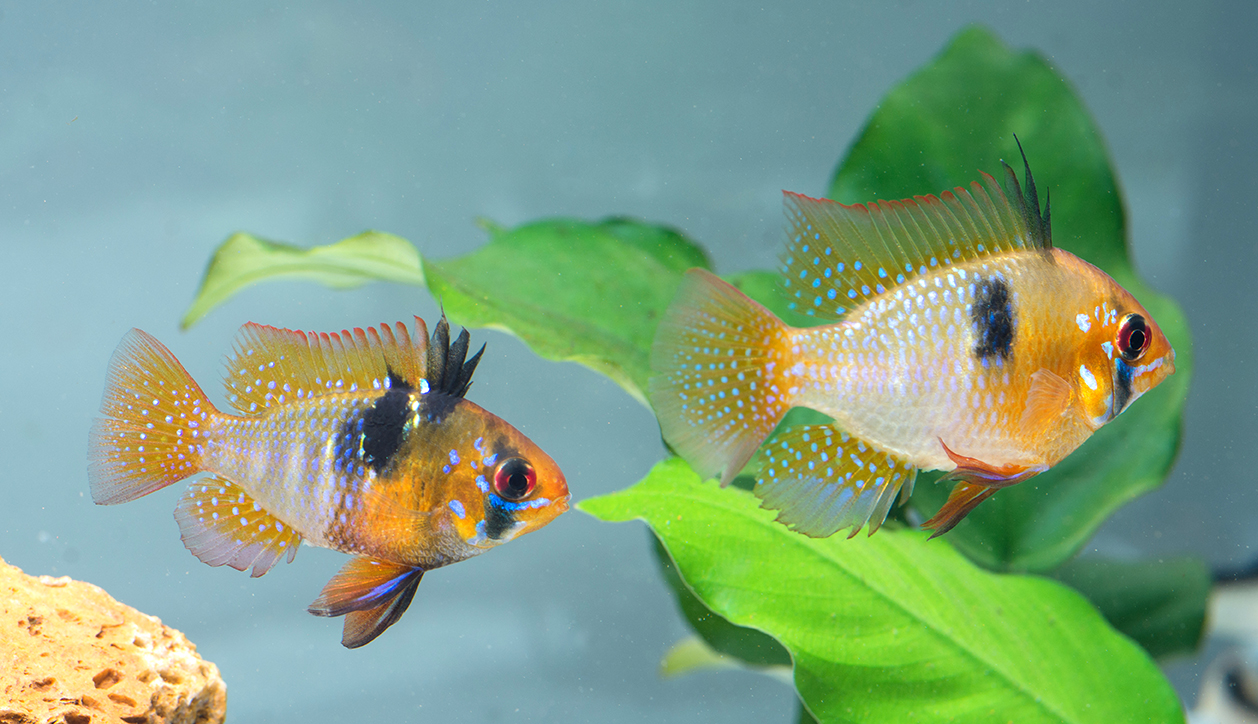Characteristics/origin
Ram cichlids are extremely popular ornamental fish that are available in cultivated varieties of varying colours. In their natural form, they generally have an orange body at the head, turning yellowish and then slightly blueish towards the tail fin. They also have a black spot that spans the middle of their body and their dorsal fin as well as a black stripe that runs vertically down their head through their eye. As mentioned above though, there are now also several cultivated varieties of ram cichlid. The ‘electric blue’ and ‘gold’ varieties have become particularly popular.
Mikrogeophagus ramirezi are native to South America where they can be found in the Orinico and other neighbouring water bodies in Venezuela and Colombia. Male ram cichlids can grow to up to 7 cm in length whereas females remain smaller at up to 5 cm. The females also tend to have a reddish stomach. If kept correctly, ram cichlids can live for up to 3 years.
Aquarium and water
To create an appropriate habitat for ram cichlids, the aquarium should have a volume of at least 60 litres. Ram cichlids are happiest in warm, soft water with tropical temperatures of 24°C to 28°C. If possible, the water should be slightly acidic (pH value: approx. 5.0 – 7.0) and have a general hardness of 2 – 10° dGH.

Keeping conditions
Mikrogeophagus ramirezi should be kept in pairs. It is also possible to keep multiple pairs in the same aquarium providing this is sufficiently large. The fish are extremely placid, making them highly suited to community tanks, although they create their own territories in pairs during the spawning season. Ram cichlids should ideally be kept with other peaceful fish. They mix particularly well with small tetras such as red neons, danios or catfish. Ram cichlids tend to favour the lower regions of the aquarium.
Planting and decoration
Ram cichlids prefer abundant vegetation around the edges. Above all, this provides females with a safe haven. Half of the aquarium should be kept clear for the active fish to swim around in.
Diet
Mikrogeophagus ramirezi are primarily carnivorous. They can be fed with a wide range of dry food in the form of granules, tablets or flakes, for example TetraMin or Tetra Micro Granules. Above all, their diet should be balanced and varied. Live food therefore provides welcome variety and the fish will also love being given Tetra FreshDelica Bloodworms.

